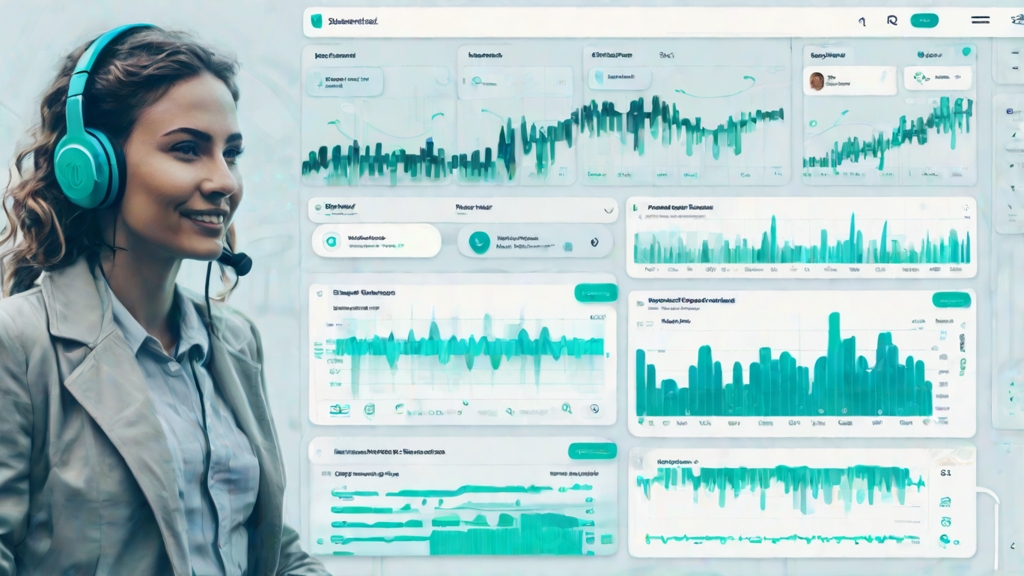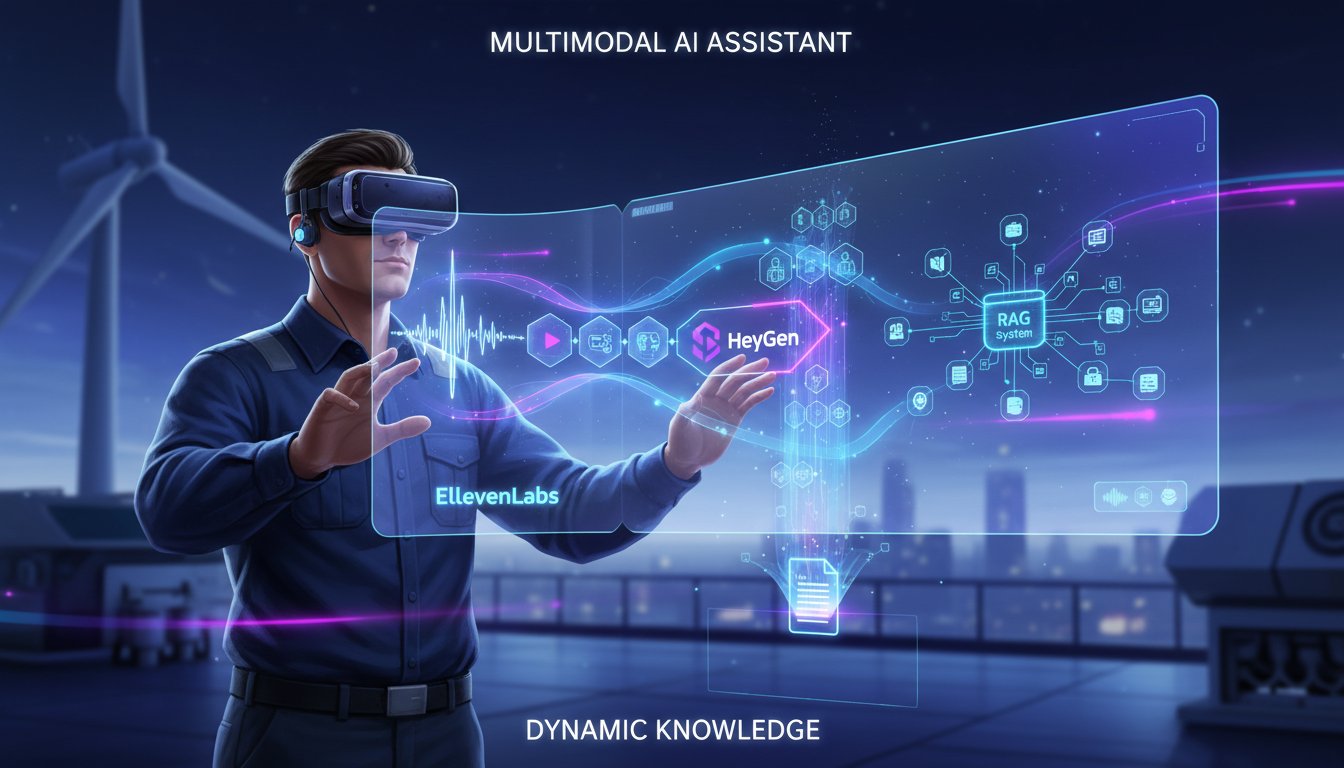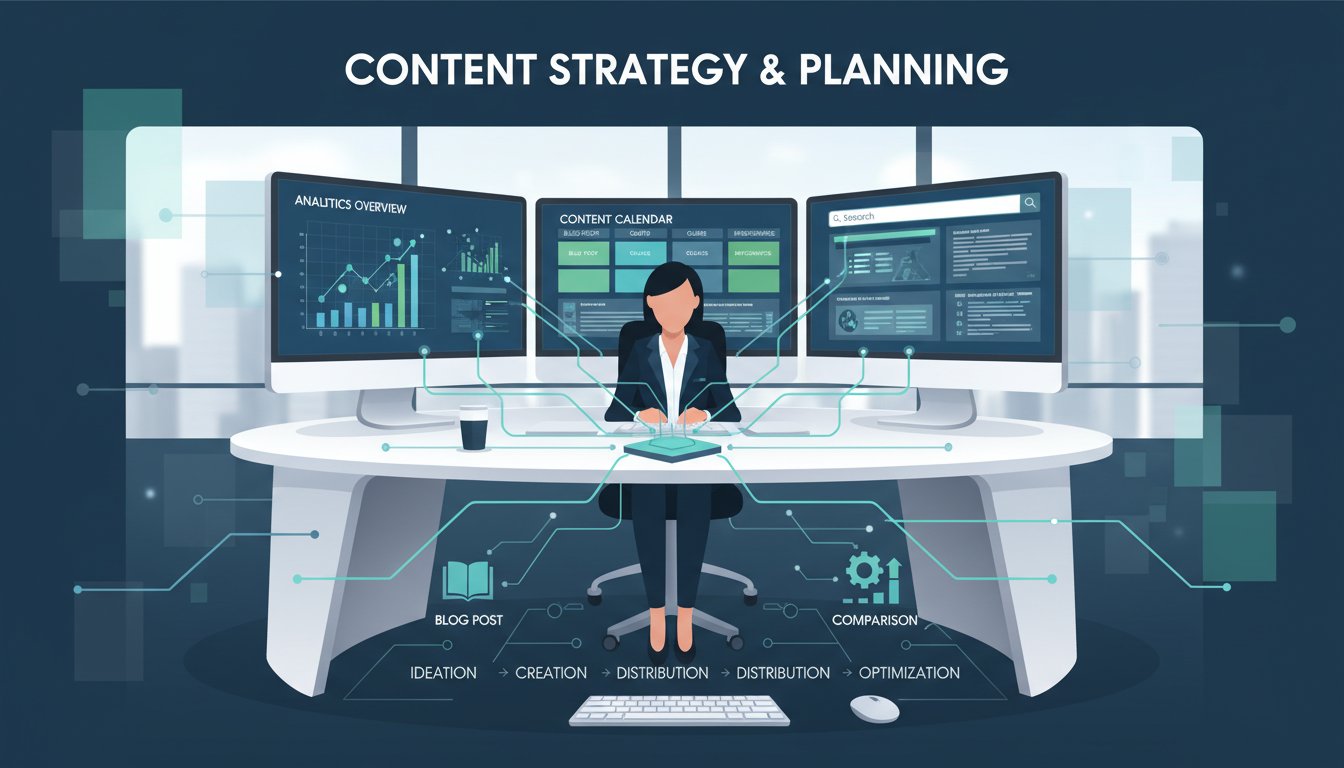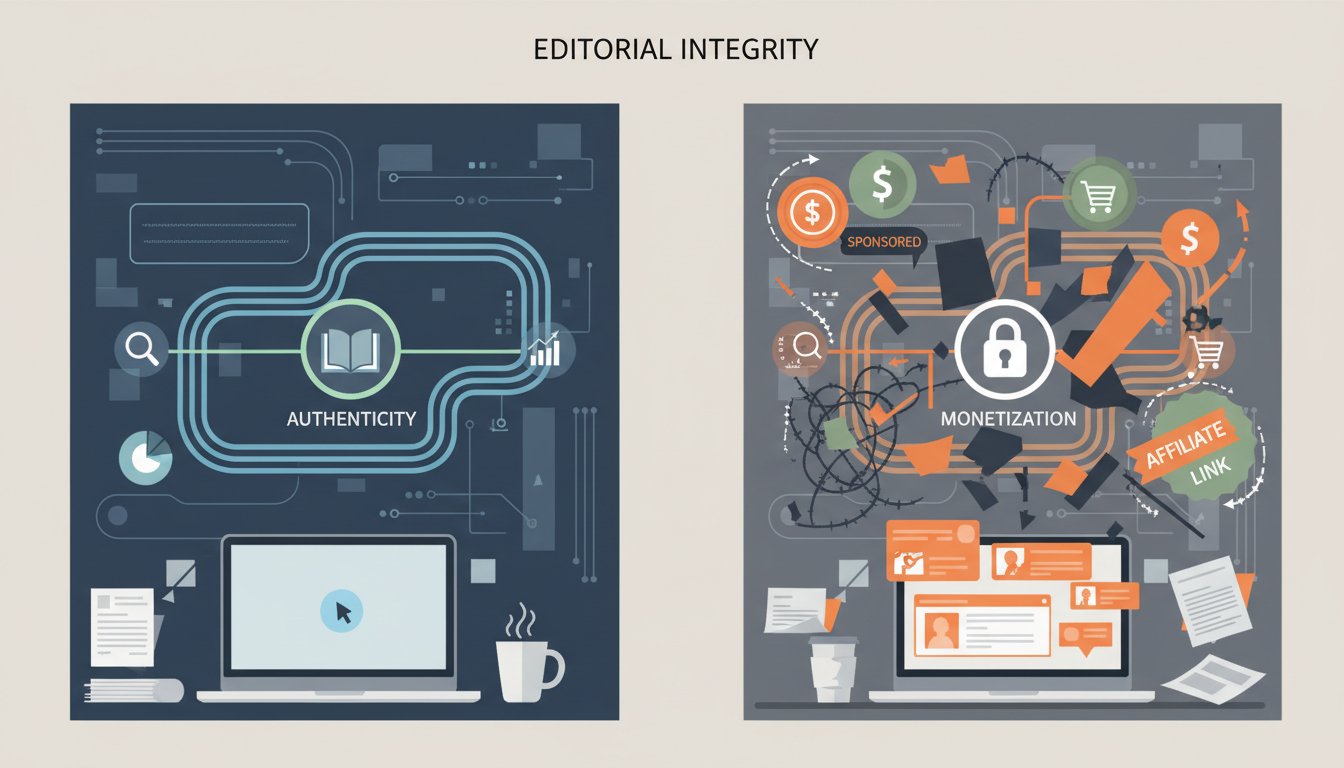The Secret to Dynamic Customer Interactions: Integrating ElevenLabs TTS with Zendesk
The landscape of customer service is perpetually evolving, demanding interactions that are not just efficient, but also deeply personal and engaging. In this new era, integrating cutting-edge AI technologies like ElevenLabs’ advanced text-to-speech (TTS) with robust customer service platforms such as Zendesk can unlock unprecedented levels of dynamism and personalization. This blog post provides a comprehensive, step-by-step technical guide for developers, AI engineers, and customer experience innovators looking to harness this powerful combination, especially for enhancing RAG-powered support systems. By the end of this walkthrough, you’ll be equipped to configure API connections, manage voice generation workflows, and implement dynamic, natural-sounding audio responses within your Zendesk environment.
Readers interested in exploring ElevenLabs’ capabilities can try for free now.
Why Bother? The Power of Voice in Customer Support
In a world saturated with text, voice offers a refreshing and effective way to communicate. Integrating ElevenLabs TTS into your Zendesk workflow, particularly when coupled with a Retrieval Augmented Generation (RAG) system, offers substantial benefits:
- Personalization at Scale: Deliver responses in natural-sounding, high-quality voices that can be tailored to your brand or even specific customer segments.
- Increased Engagement: Audio content can be more captivating and easier to consume than long blocks of text, keeping customers engaged.
- Improved Accessibility: Cater to users who prefer audio content or have visual impairments, making your support more inclusive.
- Enhanced Efficiency for RAG Systems: Vocalizing answers retrieved and synthesized by RAG systems from your knowledge base can make complex information more digestible and interactions feel more human.
- Adding a Human Touch: Even automated responses can feel more personal when delivered by a quality AI voice, bridging the gap between digital efficiency and human connection.
Prerequisites for Integration
Before diving into the technical setup, ensure you have the following:
- ElevenLabs Account: You’ll need an active ElevenLabs account and your API key. If you don’t have one, you can sign up and explore their offerings. Your API key is crucial for authenticating requests.
- Zendesk Account: A Zendesk account with administrative privileges is necessary. Depending on the depth of integration, you might need a Zendesk plan that supports custom app development and API access. Check Zendesk’s developer documentation for specifics.
- Technical Know-How: A foundational understanding of APIs (RESTful principles), webhooks, and potentially server-side scripting (e.g., Python, Node.js) will be beneficial. While this guide is comprehensive, direct coding examples will be conceptual.
- RAG System (Optional but Key for Advanced Use Cases): If your goal is to vocalize dynamically generated answers from a knowledge base, having a RAG system in place or planned is essential for the most impactful use case.
Step-by-Step Integration Guide
This section will walk you through the core technical steps to integrate ElevenLabs TTS with Zendesk.
Step 1: Your ElevenLabs Setup
- Sign Up/Log In: Head over to ElevenLabs and create an account or log in.
- Obtain API Key: Navigate to your profile or API section within the ElevenLabs dashboard. Here, you will find your unique API key.
- Secure Your Key: Treat this API key like a password. Store it securely and never expose it in client-side code or public repositories.
Step 2: Understanding Zendesk’s Extensibility Options
Zendesk offers several ways to integrate third-party services:
- Zendesk Apps Framework (ZAF): This is often the most direct way to build custom integrations that live within the Zendesk agent interface (e.g., in the ticket sidebar). You can create an app that communicates with ElevenLabs.
- Webhooks: Configure webhooks in Zendesk to trigger actions in an external service (your middleware) based on events like ticket creation or updates. This external service can then call the ElevenLabs API.
- Zendesk APIs: Utilize Zendesk’s rich set of APIs to programmatically interact with tickets, users, and other data, allowing for deep integration.
- Middleware (Highly Recommended for Complex Logic): For managing the communication between Zendesk and ElevenLabs, especially for complex workflows like RAG integration, a middleware service is advisable. This could be a serverless function (e.g., AWS Lambda, Google Cloud Functions, Azure Functions) or a dedicated application server. The middleware will handle API key management, request/response orchestration, and any custom logic.
Step 3: Configuring the API Connection (Conceptual)
Your middleware or Zendesk app backend will be responsible for making API calls to ElevenLabs.
- Authentication: All requests to the ElevenLabs API must include your API key in the
xi-api-keyheader. - Key ElevenLabs API Endpoints:
POST /v1/text-to-speech/{voice_id}orPOST /v1/text-to-speech/{voice_id}/stream: The primary endpoint for generating speech from text. You’ll specify avoice_idfor the desired voice.GET /v1/voices: To retrieve a list of available pre-made and cloned voices associated with your account.
-
Making the API Call (Example from your backend/middleware):
You’ll send a POST request to the TTS endpoint. The body of the request will be JSON containing the text to synthesize and optional voice settings.Example JSON Payload:
json
{
"text": "Hello, thank you for contacting support. We are currently reviewing your query.",
"model_id": "eleven_multilingual_v2", // Or your preferred model like eleven_turbo_v2
"voice_settings": {
"stability": 0.7,
"similarity_boost": 0.75,
"style": 0.45, // Optional: for expressive models
"use_speaker_boost": true // Optional: for expressive models
}
}
4. Security Reminder: Ensure your ElevenLabs API key is stored securely in your backend environment variables or a secrets manager. Never embed it directly in client-side code accessible by users.
Step 4: Managing Voice Generation Workflows
The workflow dictates how and when TTS is triggered and how the audio is handled.
- Triggering TTS Generation:
- RAG System Scenario: When your RAG system processes a customer query and generates a text answer from your knowledge base, your middleware intercepts this text.
- Manual Agent Trigger: An agent clicks a button within a custom Zendesk app (built with ZAF) to vocalize a standard response, a summary, or custom text.
- Automated Event: A Zendesk webhook triggers your middleware on a specific event (e.g., ticket assignment), which then generates a relevant audio notification or message.
- Core Workflow:
a. Text Finalization: The text to be converted to speech is determined (from RAG, agent input, or predefined template).
b. API Request: Your backend service sends the text to the ElevenLabs TTS API, along with the chosenvoice_idand settings.
c. Audio Reception: ElevenLabs API returns an audio stream (e.g., MP3, PCM). For non-streaming, it’s a direct audio file; for streaming, it’s a chunked response.
d. Audio Handling:
* Streaming (Preferred for Real-time): If your setup allows, stream the audio directly to an audio player in the Zendesk agent interface or, cautiously, to a customer-facing interface. This minimizes perceived latency.
* Store and Play (Simpler for some use cases): Temporarily store the generated audio file (e.g., on Amazon S3, Google Cloud Storage) and then provide a URL to this file for playback. This can be easier to implement initially and allows for caching. - Error Handling: Implement robust error handling. This includes retries for transient network issues and graceful degradation if the ElevenLabs API is temporarily unavailable or returns an error (e.g., inform the agent that TTS failed).
Step 5: Implementing Dynamic Audio Responses within Zendesk
How the generated audio is presented depends on the use case.
- Agent-Side Implementation (via Zendesk App):
- Use the Zendesk Apps Framework (ZAF) to develop a custom app that appears in the ticket sidebar or as a top bar app.
- This app can provide UI elements (e.g., a button like “Vocalize Answer”) that, when clicked, trigger the TTS workflow (Step 4) via your middleware.
- Embed an HTML5
<audio>player within the app’s iframe to play the generated audio for the agent:
html
<audio controls id="ttsPlayer">
<source src="URL_TO_AUDIO_FILE_OR_STREAM" type="audio/mpeg">
Your browser does not support the audio element.
</audio> - JavaScript within your ZAF app would dynamically set the
srcof the audio player.
- Customer-Facing Implementation (Advanced & Requires Caution):
- For Zendesk chat (e.g., via Sunshine Conversations), if the platform allows embedding custom HTML or rich media messages, you could potentially deliver audio responses. This is more complex and needs careful consideration of the user experience.
- Always provide a text transcript alongside any customer-facing audio for accessibility and user preference.
- Thoroughly test across different devices and browsers.
Spotlight: Vocalizing RAG-Powered Answers – The Game Changer
This is arguably the most transformative application of the ElevenLabs-Zendesk integration.
Conceptual Process Flow:
- Customer Inquiry: A customer submits a question via a Zendesk channel (email, chat, web form).
- Query to RAG: The Zendesk ticket or message content is passed (often via middleware) to your RAG system.
- RAG Processing: Your RAG system retrieves relevant documents from its knowledge base (e.g., FAQs, product manuals, past ticket resolutions), and the generative model synthesizes a concise, accurate text answer.
- Text to Speech: This synthesized text answer is then routed to the ElevenLabs API via your integration middleware.
- Audio Delivery:
- For Agents: The generated audio is made available within the Zendesk agent interface. The agent can listen to confirm accuracy and then decide how to use it (e.g., play it if on a call, use it to quickly understand the answer before replying in text).
- For Customers (with caution): In some sophisticated setups, the audio could be directly presented to the customer in a chat interface, accompanied by the text.
Benefits: This flow provides highly contextual, natural-sounding audio responses based on your comprehensive, up-to-date knowledge base, significantly enhancing the agent’s ability to deliver quality support and the customer’s experience.
Best Practices for Voice Selection and User Experience (UX)
- Voice Consistency & Brand Alignment: Select a voice from ElevenLabs’ library or clone a unique voice that aligns with your brand’s personality. Consistency across interactions is key.
- Prioritize Clarity and Naturalness: Test different voices and ElevenLabs’ voice settings (e.g., stability, similarity boost, style exaggeration) to achieve maximum clarity and a natural, human-like cadence. The
eleven_multilingual_v2model offers great quality for many languages, whileeleven_turbo_v2offers lower latency. - Latency Management: TTS generation isn’t instantaneous. Minimize perceived delays by:
- Optimizing the length of text sent for TTS.
- Choosing lower-latency ElevenLabs models if speed is paramount.
- Using streaming where possible.
- Implementing loading indicators in the UI so users understand audio is being prepared.
- Consider pre-generating audio for very common, static responses.
- Provide User Controls: For any audio playback, especially if customer-facing, include standard controls like play/pause, volume adjustment, and ideally a progress bar.
- Offer Transcripts: Always accompany audio with a text transcript for accessibility, user preference, and situations where audio playback isn’t feasible.
- Ensure a Seamless Experience: Avoid auto-playing audio unexpectedly. Transitions between text and audio should be smooth. Provide clear visual cues when audio is available or playing.
- Feedback Loop: Allow agents (and perhaps customers) to provide feedback on the quality and relevance of the audio responses. This helps in refining the system.
Conclusion: Elevate Your Customer Support to the Next Level
Integrating ElevenLabs’ state-of-the-art TTS capabilities with Zendesk is more than just a technical upgrade; it’s a strategic move to transform your customer interactions from mundane text exchanges into dynamic, engaging, and highly personalized conversations. By vocalizing information—especially complex answers accurately synthesized by RAG systems—you can significantly enhance customer understanding, boost agent efficiency, and foster a more human connection in your digital support channels.
The path to a more engaging and accessible customer support solution is clear. The tools are powerful, and the potential for innovation is immense.
Ready to explore the future of customer interaction with AI-driven voice? Try ElevenLabs for free now and begin your journey towards a more dynamic support experience.




